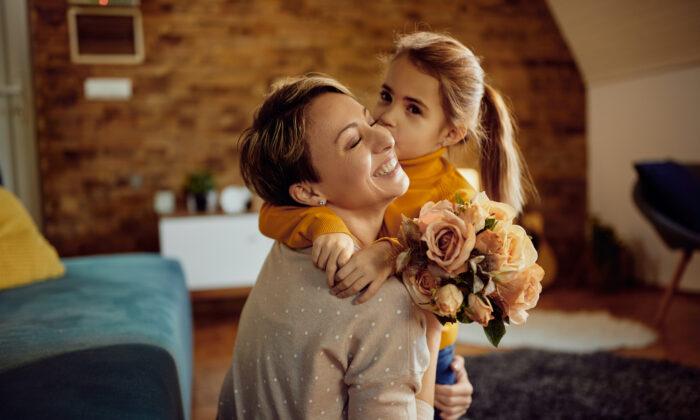Have you recently taken a good look at what’s inside your clothing closet? You can probably think of a handful of items you wear on a regular basis, but what about the rest? Does it only contain items you’ve worn lately? Shoes that still fit? Jeans that make you feel good about your body?
Based on that question, Belgians and Americans were found to have the highest percentage of unused clothes in their closets. Both countries came in at not using over 80 percent of their clothing—far more than each group initially thought to be true.
That’s an incredible amount of unused clothing!
Common Problems With Our Closets
1. We have too many items.When your home feels cluttered, it’s probably because of one simple problem—there’s too much stuff. This is the root cause of our clutter problem. Our closets are no different. They hold a select number of pieces we love and wear regularly, but are crowded out by the dozens of other items we haven’t worn in the past year.
We would feel far less overwhelmed if we would keep just the clothes we actually wear and enjoy, and remove the items that just take up space. I love opening up my closet and seeing only what I currently love to wear. It makes choosing my clothes for the next day easy, and I feel more grateful for what I have.
I was guilty of hanging onto many clothes, jeans, T-shirts, and shoes that I once loved and had fond memories of. For example, all my bridesmaid dresses that I wore in my dear friends’ and sisters’ weddings the past decade. They held so many great memories, but did I ever once wear them again? Nope.
It’s okay to have items that you once loved, but if they no longer make their way into your regular wardrobe, it’s probably time to let them go. Decluttering aficionado Marie Kondo would advise us to thank them for their service and move on.
Being able to detach emotionally from an item that once brought you joy isn’t easy, but the freedom you find through having less stuff to manage will feel like a breath of fresh air.
We’ve all likely splurged at one time on an item in our closets. Maybe it was fancy boots or a designer pair of jeans. But oftentimes, the item didn’t live up to its hype and we ended up not wearing it like we thought we would.
But what about all that money we paid for it? We have to at least keep it in our closets to use someday, because it would be a waste to get rid of it after what we spent on it.
Hanging onto items because you feel guilty about wasting money is a common problem. Learn to recognize what you actually wear on a regular basis and apply the “48-hour rule” to avoid those costly impulse buys (waiting 48 hours to purchase an item to decide if you truly need it).
Our bodies change as we age, especially with having babies, and what fit us before might not continue in the next season of life. Or what was once in style may no longer be, but we hang onto these items “just in case.”
Keeping items just in case we might someday wear them is a common way we add clutter to our closets. I finally let go of an old pair of hiking shoes I wore during college while studying abroad in the beautiful rolling hills of the English Cotswolds. Since returning, my regular old sneakers met all of my casual hiking expeditions, but I hung onto those hiking shoes “just in case” I ever got back into more serious hiking.
If you’re hesitant to get rid of items because you’re unsure if you’ll want to wear them eventually, I recommend creating a “just in case bin.” Place all the items inside this bin that you can’t yet part with. Store that bin out of sight. After 6 to 12 months, if you haven’t had a need for the item, it’s probably safe to let it go.
When it comes time to select our outfit for the next day, we tend to think that the more choices we have, the better off we’ll be. Right?
The opposite is more often true.
When my closet contains my favorite few pairs of jeans, a handful of comfortable, good-quality sweaters, and some shirts that I know fit well, the decision of how to put together an outfit takes less than a minute. I’m not faced with a sea of options that drown out my favorites; I can see what I regularly wear easily without the added clutter.
Just because you own something doesn’t mean it deserves to remain in your home forever. For many of us, we have more than enough options in our closet compared to the rest of the world. For this, we should feel grateful. But a problem that some face when decluttering their closet is a feeling of being wasteful by getting rid of clothing that still serves a purpose.
For me, I’ve found a lot of gratitude by donating the clothing that I no longer wear. There are many organizations that willingly accept gently used clothing and can use those profits to benefit others in your community.
Comparison. We’re constantly trying to keep up with the Joneses. We see what others have and we begin to desire that for ourselves. It happens easily while scrolling social media, visiting friends’ homes, or watching television.
Start Small to See Big Improvements
If opening your closet is a constant struggle, I’d encourage you to choose a few of these common closet problems to work through. Start evaluating what you actually wear and learn to let the excess go. See how you can use your unwanted items to benefit others who are in need. When we learn to live with less in our closets, it encourages us to continue those habits elsewhere in our lives as well.Choosing to live with less of what doesn’t matter is choosing to make room for what does. It’s a rewarding feeling to let go of what merely takes up physical and mental space.






